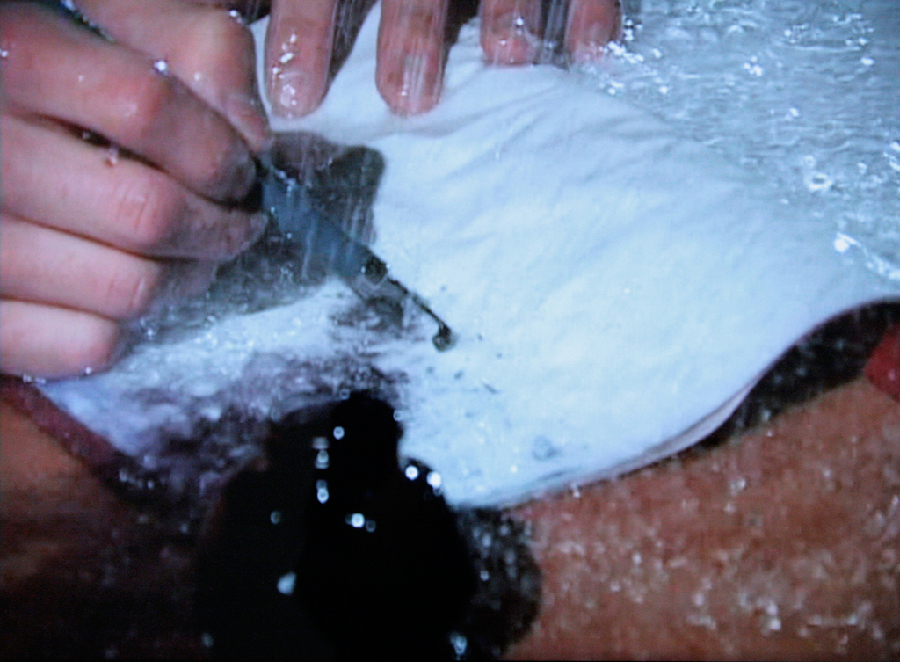

DVD video in loop

Lead powder on canvas

Six pen pressures on paper, 33,5 x 24,5 x 6 cm
Setting a painting is a series of white monochromes, all with a strictly identical format, 1m by 1m. At first glance, no signs seem to show.
Degree zero, silence of the blank page: this is already enough to inscribe the series in a certain history of abstract painting, based on strictly material facts, questioning its physical presence in space and its direct, frontal link with the viewer.
However, all one has to do is shift one's eyes slightly, to catch a glimpse of a multitude of small stains on the edge of the works and all around, on the walls on which they are placed. One can distinguish fingerprints, dirty finger marks: clues that show that something took place. The white monochrome becomes incriminating evidence. One can then guess that the real subject of Setting a painting is, as the title indicates, a gesture. Not the expressive gesture of mythical creation, but that, much more prosaic, of the installation of the works. A gesture, or more a succession of gestures, which would ordinarily remain invisible and create here the necessary conditions for an object, a canvas stretched out on a frame, to finally get our attention, appeal to our vision and our consideration; so that this object can precisely become a painting. By representing the gesture that allows us to see, Masahide Otani questions in this way the status of what we look at. It is not a question of installing THE painting, but A painting, any painting, that interests the artist. The painting is reduced here to the rank of performance leftovers, almost an accessory. The work could be compared to Allan McCollum's famous Surrogate Painting, the « substitution paintings » - in reality plaster casts - that the American artist made in huge quantities.
The difference with McCollum is that Masahide Otani's series is relatively limited (5 works) and that this is the second installation. The marks left by his Bordeaux exhibition mix in with those of the older shows. In this aspect, the paintings can be seen as ritual objects that the artist carries from one place to another and that will display their memories. By making the whole protocol visible, Masahide Otani seems to encourage us to forget what is played out in the space defined by the work, to reveal what is going on around it, on the side, in its « paratext » to extend a literary metaphor. All in all, one mustn't concentrate on what is said, but on the conditions in which the message appeared.
Painting is no longer a question of signs but of situation.
Paul Bernard